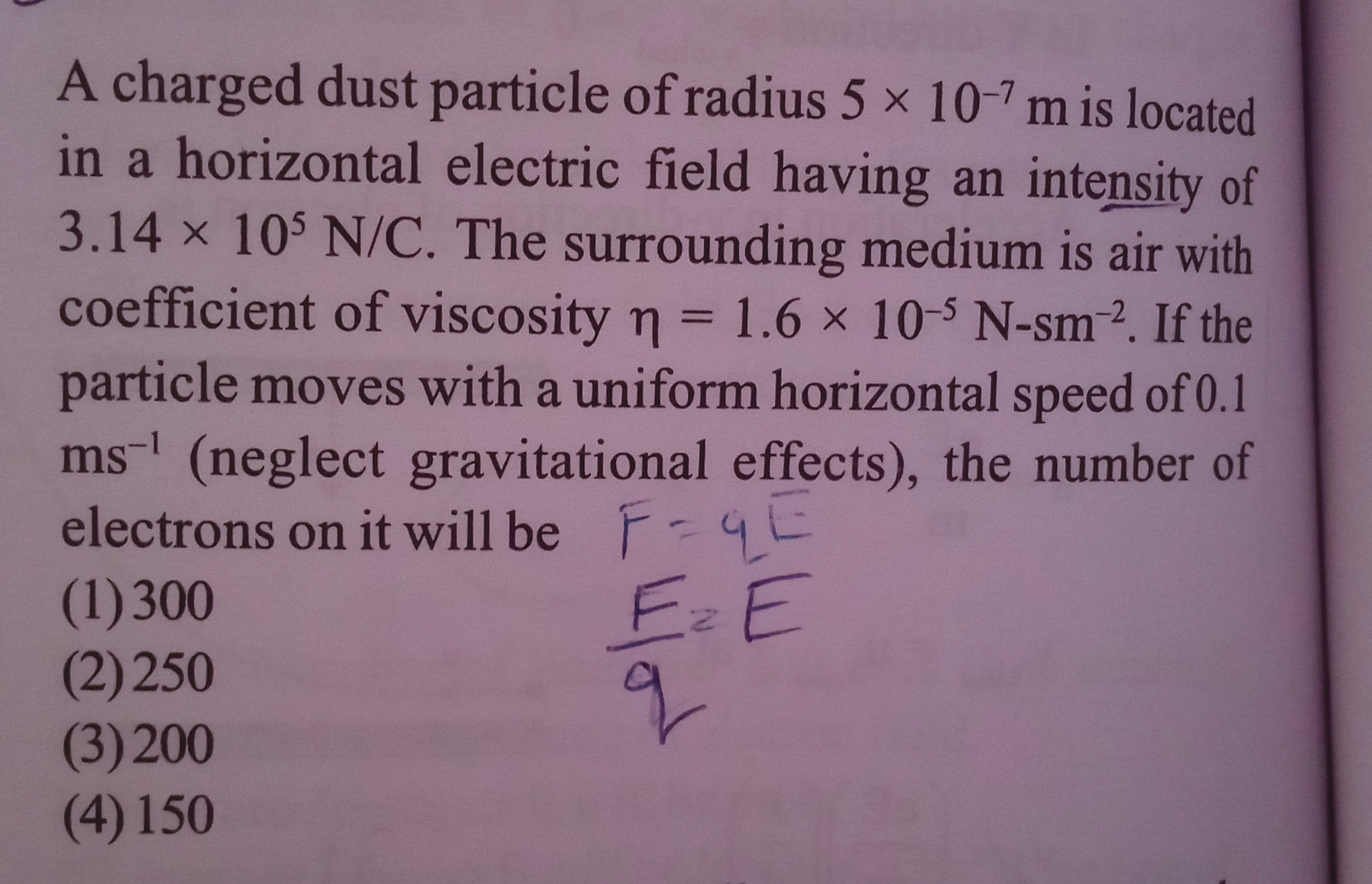Question
Question: A charged dust particle of radius 5 × 10⁻⁷ m is located in a horizontal electric field having an int...
A charged dust particle of radius 5 × 10⁻⁷ m is located in a horizontal electric field having an intensity of 3.14 × 10⁵ N/C. The surrounding medium is air with coefficient of viscosity η = 1.6 × 10⁻⁵ N-sm⁻². If the particle moves with a uniform horizontal speed of 0.1 ms⁻¹ (neglect gravitational effects), the number of electrons on it will be

300
250
200
150
300
Solution
The charged dust particle is in a horizontal electric field and moves with a uniform horizontal speed. Since the velocity is uniform, the net horizontal force on the particle is zero. The forces acting on the particle in the horizontal direction are the electric force and the viscous drag force due to the air. We are neglecting gravitational effects, so we only consider horizontal forces.
The electric force on the charged particle with charge q in an electric field E is given by Fe=∣q∣E.
The viscous drag force on a spherical particle of radius r moving with speed v in a medium with viscosity η is given by Stokes' law: Fd=6πηrv.
Since the particle moves with uniform speed, the electric force is balanced by the viscous drag force: Fe=Fd ∣q∣E=6πηrv
Let n be the number of excess electrons on the dust particle. The charge of the particle is q=−ne, where e is the magnitude of the charge of an electron (e=1.6×10−19 C). So, ∣q∣=∣−ne∣=ne.
Substituting this into the force balance equation: neE=6πηrv
We need to find the number of electrons, n. Solving for n: n=eE6πηrv
We are given the following values:
- Radius of the particle, r=5×10−7 m
- Electric field intensity, E=3.14×105 N/C
- Coefficient of viscosity of air, η=1.6×10−5 N-sm−2
- Uniform horizontal speed, v=0.1 ms−1
- Magnitude of the charge of an electron, e=1.6×10−19 C
We can use π≈3.14.
Substituting the given values into the formula for n: n=(1.6×10−19 C)×(3.14×105 N/C)6×3.14×(1.6×10−5 N-sm−2)×(5×10−7 m)×(0.1 ms−1)
n=1.6×3.14×10−19×1056×3.14×1.6×5×0.1×10−5×10−7
Cancel out the common terms 3.14 and 1.6 from the numerator and the denominator: n=10−19×1056×5×0.1×10−5×10−7
Simplify the numerical part and the powers of 10: 6×5×0.1=30×0.1=3 10−5×10−7=10−12 10−19×105=10−14
So, n=10−143×10−12 n=3×10−12−(−14) n=3×10−12+14 n=3×102 n=300
The number of electrons on the dust particle is 300.
